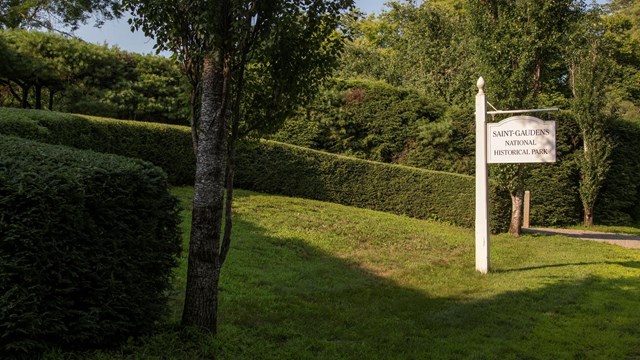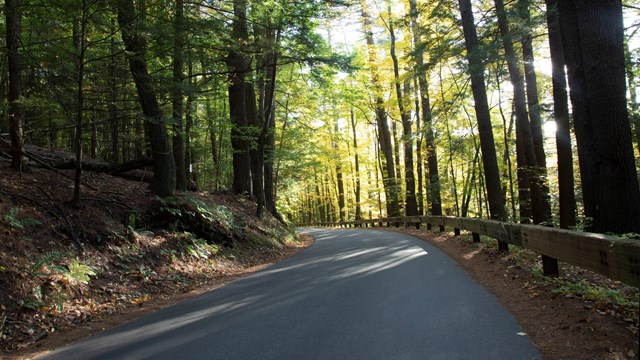
NPS/Don Freeman Art, history, and nature come together in Cornish, NH. Once the home of sculptor Augustus Saint-Gaudens and unofficial center of the Cornish Colony of artists, Saint-Gaudens National Historical Park continues to attract people from across the world. These tips will help you prepare for your next visit to the park whether you are drawn by its rich history, fragrant gardens, large-bronze sculptures, or opportunity to connect with the ones you love.
NPS/Rob Strong Grounds and trails are open during daylight hours.Use caution as walkways, trails, and grounds are not currently maintained and may be icy, snow-covered, or uneven. Cross-country skiing and snowshoeing are permitted when conditions permit. In the event of an emergency, call 911. All buildings are closed for the winter season.The historic buildings, galleries, and visitor center including park restrooms will reopen Memorial Day weekend. America the Beautiful National Parks and Federal Recreational Lands Passes can be obtained online. 
Bring your furry friend.Dogs are permitted on park grounds, but must be kept on a leash at all times. This includes when hiking the nature trails. We ask that dog owners be respectful of the park and remove dog waste. Bags for that purpose are located in a dispenser near the kiosk in the main parking lot. Pets are not permitted in any park building except for trained service animals. Plan for the 2026 visitor season.Stay tuned for the announcement of special events, daily programming, and open positions. 
Fees & Passes
Entry passes provide access to the park grounds, historic buildings, and ranger programs. 
Event Calendar
Learn more about scheduled programs, tours, and events. 
Getting Here
Plan your route to the park. |
Last updated: November 17, 2025
